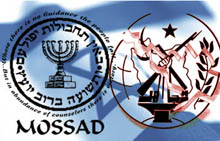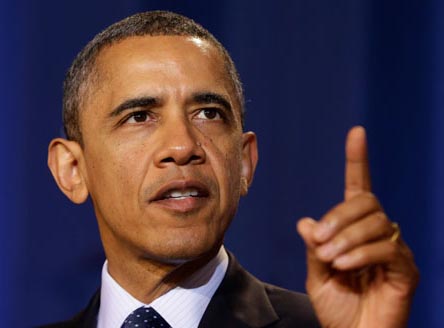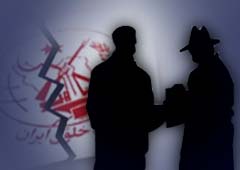
Global fear of Iran’s ‘controversial’ nuclear programme is a ‘US-Israeli construct’
‘Iran will have enough enriched uranium for nuclear bomb by next summer’ – Netanyahu at the UN General Assembly in Sep 2012
Iran’s nuclear talks with the P5+1[1] are taking place in Vienna. A “solid commitment” from Iran is needed, ensuring that its stated peaceful atomic energy programme is not a clandestine attempt to build nuclear weapons. The Iranians have found themselves needing to make a leap towards lifting the crushing international sanctions, notably those imposed by the US. It is the basis of these sanctions that MEMO has re-examined with a group of senior researchers in the field.
When Ellie Geranmayeh, Iran expert at the European Council on Foreign Relations (ECFR) spoke with MEMO, she insisted, “In the same way that any potential military dimensions of Iran’s nuclear programme needs to be explained to the United Nations, the West also needs to explain the basis of its accusations and suspicions.”
Ever since the International Atomic Energy Agency (IAEA) reported “sensitive enrichment and reprocessing activity” in Iran in 2003, the country has been under close supervision. The UN Security Council decided to impose economic sanctions for Iran’s non-compliance with its previous request to suspend enrichment activities before extending them in 2007, 2008 and 2010. According to Reuters, Washington was recently pushing for an even more severe attack on the Iranian economy, but this was rejected by the Security Council. Iran’s former president, Mahmoud Ahmadinejad, argued that the sanctions are “illegal” and imposed by “arrogant leaders”. The sanctions are devastating the Iranian economy and have been imposed despite the fact that Iran’s uranium enrichment is being held below 5 per cent, consistent with developing fuel for a civilian nuclear power plant. US pressure has led several nuclear contracts between Iran and foreign governments to fall through.
The United States Enrichment Corporation (USEC)[2], meanwhile, has used its official website to “call for action” to change the course of its declining share of the global enrichment market, underscoring the need to “limit the spread of enrichment technologies to rogue states”. This controversial Western centric use of the phrase “rogue states” demands a thorough investigation, according to many experts.
Furthermore, the West’s foundation for these claims against Iran has too many fault lines “to begin to even list them,” claims historian and Iran nuclear expert Dr Gareth Porter. The single biggest factor pushing “the elite’s obsession over Iran as a threat and as an enemy,” he says, “is that the basic premise was laid down early at the end of the Cold War.” His ground-breaking work recently received the annual Martha Gellhorn Prize for Journalism from the London-based journalists’ Frontline Club. MEMO spoke to Porter about the trajectory of the “imminent Iranian nuclear threat” and its construct by a handful of powerful actors with a particular political agenda and documents “with little reliability” that the media over the last decade have had no qualms about accepting and sharing as (unauthenticated) “evidence”.
1)”The laptop documents”
One of the main anomalies in America’s porous trajectory on Iran is the pseudo-crucial “laptop documents”. Presented by the US to the Security Council, these 1,000 pages are alleged to contain research on nuclear weapons-related activities, stolen from the computer of an Iranian scientist or engineer who was, it is claimed, involved in the programme. “This was a trick to cover the truth,” said Porter. He recapped how the documents were passed to Germany’s intelligence agency by a member of the Mujahideen-E-Khalq (MEK) an Iranian terrorist organisation in exile, which has been a client of Israel’s Mossad spy agency for several years. German intelligence and many other government officials, including ex-US Secretary of State Colin Powell, warned that the US and EU should not make the mistake of basing policy on this information.
2) Redesigned Iranian missile
Another central anomaly is the “discovery” that the Iranian missile re-entry vehicle is depicted in the documents as being redesigned to accommodate a nuclear payload. “This was one that had been discarded by Iran at least two years before the drawings were said to have been made,” Porter argues, “not according to Iranian sources, but an authoritative Western source: the London-based International Institute for Strategic Studies (IISS).”
3)Technical errors
“The discovery that the same drawings of an alleged effort to redesign the re-entry vehicle of the Shahab-3 missile contained numerous technical errors,” Gareth Porter contends, “indicated again that they had not been done by those involved in Iran’s missile programme.”
4) Codename (5.15)
This was given to one of the sub-projects in the alleged nuclear weapons research programme that was, in truth, the number assigned to a contract with the civilian atomic energy organisation of Iran or an ore processing facility and was signed two years before the supposed covert research programme was even said to have begun.
Israel’s position
Last week, at the Herzliya Conference, Israel’s platform for the articulation of national policy, Global Jewish News Source reported major Israeli politicians with strong beliefs in this propaganda. “What is at stake is not merely Israel’s position in the Middle East,” argued Likud’s Yuval Steinitz, “what is at stake is the fate of the entire world… Iran is a nuclear threshold state. It just hasn’t created the weapons yet.”
Lina Khatib of the Carnegie Endowment for International Peace think-tank explained to MEMO how Israel been trying to push the US to take military action against Iran to stop its nuclear enrichment programme. Further, the government in Tel Aviv has also been engaging in “clandestine intelligence operations to halt Iran’s nuclear developments, for example through cyber-attacks,” she warned. In response, America pushed back against Israel’s request for military strikes against Iran, and is not likely to include Israel as a formal partner in the Vienna negotiations over the nuclear file, “though the US will ensure that Israeli interests are represented during the talks”.
“Overwhelming” evidence exists, according to Dr Gareth Porter, that it was Israel’s Mossad that produced the falsified documents that have propelled the “manufactured crisis” forward, “not just once, but twice”. First came the “laptop documents” that surfaced in 2004 followed in 2008-2009, two years into his research, when a series of intelligence reports and allegedly Iranian documents were given to the IAEA directly by the Israelis, “resulting in more accusations following the November 2011 IAEA report”.
According to Porter, Israeli’s pressure on the Obama administration to make demands of Iran will ensure that the talks fail. “Thus far that Israeli strategy has succeeded, because the Obama administration has demanded a cut in Iranian centrifuges that makes it difficult to envision a final compromise.” Basing any military action on false dossiers would be as irresponsible as the invasion of Iraq in 2003; the world witnessed what consequences that had, when soldiers on the ground had no clue about what was going on.
Current talks
Iran has been talking separately with most of the members of the P5+1 group in advance of the formal meetings week. Although reports have been modestly positive about the potential outcome, the final accord date set as July 20 is already predicted to be given a six-month extension by government officials from most of the countries involved.
Porter remains “very worried” that the talks will fail because of America’s “hard-line” refusal to tolerate any Iranian enrichment of uranium to support even its present nuclear reactor, “much less future reactors”. He recently interviewed Iranian Foreign Minister Javad Zarif, who has not given up hope of renewed and extended diplomatic flexibility on behalf of the US. Even so, he indicated that statements had been made in the talks, as well as to the media, that were “posturing”. He implied that this was politically dangerous because it would make later adjustment in the US negotiation stance very difficult.
According to Lina Khatib, we will see the lifting of some sanctions, but a comprehensive deal will take time to be made and implemented. However, as Iran’s nuclear programme is primarily, she says, “aimed at giving Iran political weight in the Middle East and international recognition as a major regional player, rather than at preparing to conduct a nuclear attack,” there might be more “muscle-flexing” involved than seen so far.
The threat of an ISIS take-over of major Iraqi cities near the border with Iran has collided with the current negotiations on the country’s nuclear programme and arguably paved the way for an indirect willingness to reach an agreement with America. The pace of events means that Iran, which in the 1980s fought former Iraqi dictator Saddam Hussein for eight years, may be willing to cooperate with Washington to bolster Iraq’s Shi’ite Prime Minister Nouri al-Maliki. Iranian President Hassan Rouhani has said that he will consider such cooperation, if the US takes action in Iraq.
However, a US official cautioned against reading too much into the latest talks: “No one should expect that all of a sudden, overnight, even if we resolve the nuclear agreement, that everything will change. It will not. The fundamentals remain exactly as they are. Until we resolve the nuclear issue there cannot be any kind of fundamental change in this relationship.”
Footnotes
[1] Iran has had meetings with China, France, Germany, Russia, the United Kingdom and the United States. These six are known as the P5+1 (the permanent five members of the UN Security Council plus Germany) or alternatively as the E3+3, used by European countries. These meetings are intended to resolve concerns about Iran’s nuclear programme.
[2] USEC: the American corporation that contracts with the United States Department of Energy to produce enriched uranium for use in nuclear power plants.
Henriette Johansen, Middle East Monitor,




